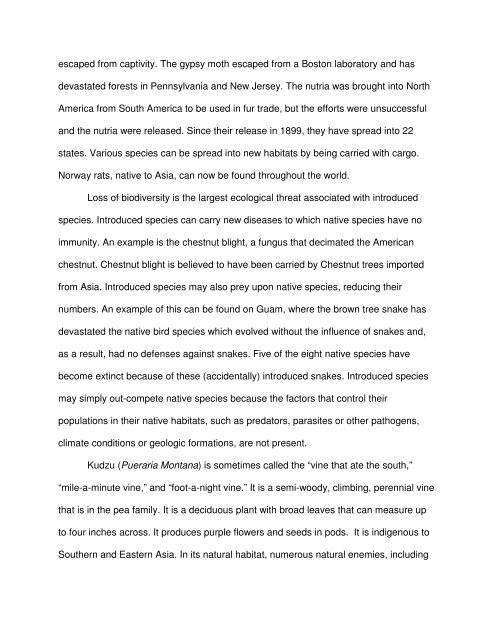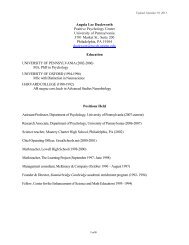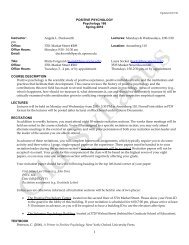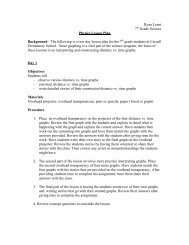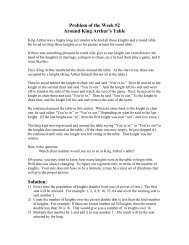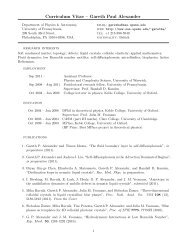Invasive Species Paper
Invasive Species Paper
Invasive Species Paper
You also want an ePaper? Increase the reach of your titles
YUMPU automatically turns print PDFs into web optimized ePapers that Google loves.
escaped from captivity. The gypsy moth escaped from a Boston laboratory and has<br />
devastated forests in Pennsylvania and New Jersey. The nutria was brought into North<br />
America from South America to be used in fur trade, but the efforts were unsuccessful<br />
and the nutria were released. Since their release in 1899, they have spread into 22<br />
states. Various species can be spread into new habitats by being carried with cargo.<br />
Norway rats, native to Asia, can now be found throughout the world.<br />
Loss of biodiversity is the largest ecological threat associated with introduced<br />
species. Introduced species can carry new diseases to which native species have no<br />
immunity. An example is the chestnut blight, a fungus that decimated the American<br />
chestnut. Chestnut blight is believed to have been carried by Chestnut trees imported<br />
from Asia. Introduced species may also prey upon native species, reducing their<br />
numbers. An example of this can be found on Guam, where the brown tree snake has<br />
devastated the native bird species which evolved without the influence of snakes and,<br />
as a result, had no defenses against snakes. Five of the eight native species have<br />
become extinct because of these (accidentally) introduced snakes. Introduced species<br />
may simply out-compete native species because the factors that control their<br />
populations in their native habitats, such as predators, parasites or other pathogens,<br />
climate conditions or geologic formations, are not present.<br />
Kudzu (Pueraria Montana) is sometimes called the “vine that ate the south,”<br />
“mile-a-minute vine,” and “foot-a-night vine.” It is a semi-woody, climbing, perennial vine<br />
that is in the pea family. It is a deciduous plant with broad leaves that can measure up<br />
to four inches across. It produces purple flowers and seeds in pods. It is indigenous to<br />
Southern and Eastern Asia. In its natural habitat, numerous natural enemies, including


